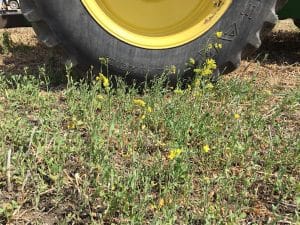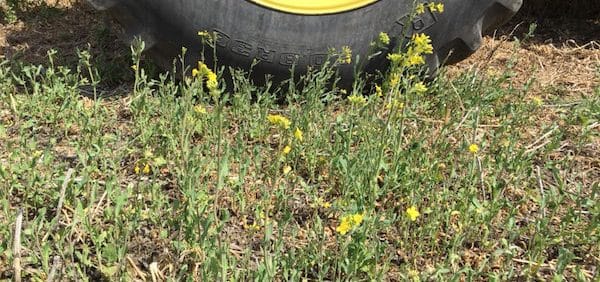Volunteer canola is a weed and competes with the crop for nutrients and water and sunlight. Volunteers in a canola crop do not make a positive contribution to yield. Growers also have other reasons to get rid of them: Volunteers do not have seed treatment, so they can introduce seedling diseases and increase flea beetle pressure. Also, volunteers in non canola years provide a host for blackleg and clubroot, reducing the effectiveness of crop rotation for managing these issues. Even if a clubroot-resistant variety, the second generation volunteers may not have the same level of clubroot resistance, which means they could have big spore-producing galls.

Before canola: Apply carfentrazone and/or bromoxynil along with glyphosate to get glyphosate-tolerant volunteers. This tank mix is recommended even for growers who have never grown glyphosate-tolerant canola given that some volunteers will have both traits due to natural pollen transfer. Bromoxynil may have a slight edge over carfentrazone, and there will be an additive benefit to using both. Note that the tank mix will also reduce the risk of selecting for glyphosate-resistance among other weed species, especially kochia.
Before other crops: Spraying ahead of cereals and pulses gives you a chance to try Group 2 residual products in the pre-seed tank mix. The Group 2 partner will get most volunteers (except Clearfield) and take care of flushes over the first couple of weeks at least. Glyphosate in the pre-seed window will take care of Clearfield volunteers.
See the chart on page 63 of the 2017 Guide to Crop Protection for the list of products available.

